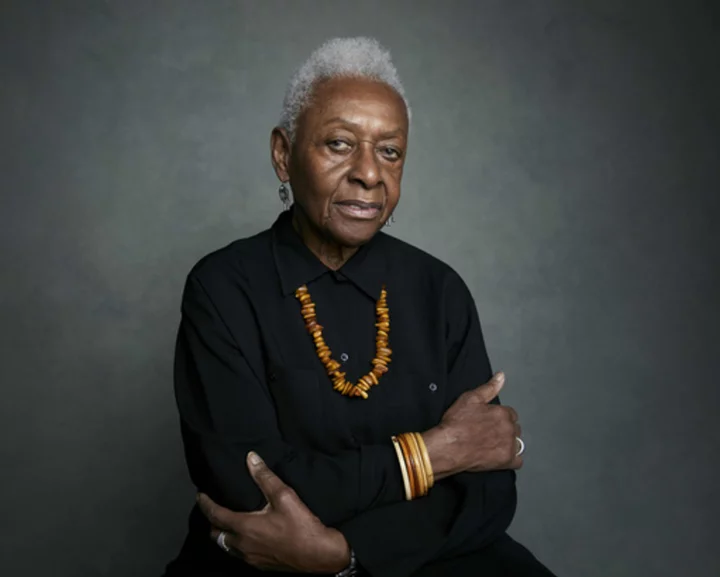NEW YORK (AP) — Even during a year of sobering economic news for media companies, the layoffs of three Pulitzer Prize-winning editorial cartoonists on a single day hit like a gut punch.
The firings of the cartoonists employed by the McClatchy newspaper chain last week were a stark reminder of how an influential art form is dying, part of a general trend away from opinion content in the struggling print industry.
Losing their jobs were Jack Ohman of California's Sacramento Bee, also president of the Association of American Editorial Cartoonists; Joel Pett of the Lexington Herald-Leader in Kentucky and Kevin Siers of the Charlotte Observer in North Carolina. Ohman and Siers were full-time staffers, while Pett worked on a free-lance contract. The firings on Tuesday were first reported by The Daily Cartoonist blog.
“I had no warning at all,” Ohman told The Associated Press. “I was stupefied.”
McClatchy, which owns 30 U.S. newspapers, said it would no longer publish editorial cartoons. “We made this decision based on changing reader habits and our relentless focus on providing the communities we serve with local news and information they can't get elsewhere,” the chain said in a statement.
There's a rich history of editorial cartooning, including Thomas Nast's vivid takedowns of corrupt New York City politicians in the late 1800s and Herbert Block's drawings of a sinister-looking Richard Nixon in The Washington Post.
At the start of the 20th century, there were about 2,000 editorial cartoonists employed at newspapers, according to a report by the Herbert Block Foundation. Now, Ohman estimates there are fewer than 20.
The last full-time editorial cartoonist to win a Pulitzer was Jim Morin of the Miami Herald in 2017. Since then, owing to the diminishing number of employed cartoonists, the Pulitzers have broadened the category in which they compete and renamed it “Illustrated Reporting and Commentary.”
While written editorials can sometimes be ponderous and intimidate readers, the impact of a well-done cartoon is instantaneous, Pett said.
“Usually when you look at an editorial cartoon, it's (done by) some guy like you who is pissed who can draw,” he said. “It's just relatable.”
While economics is clearly a factor in an industry that has lost jobs so dramatically that many newspapers are mere ghosts of themselves, experts say timidity also explains the dwindling number of cartoonists. Readers are already disappearing, why give them a reason to be angry?
Pett has been involved in a battle with Daniel Cameron, Kentucky's attorney general and a Republican candidate for governor. Cameron, who is Black, has accused Pett of being a race-baiter in his cartoons and called for his firing at a news conference — not knowing that hours earlier, his wish had been granted, said Pett, a Pulitzer winner in 2000.
His bosses never told him to avoid cartoons about Cameron, but gave him a series of guidelines, Pett said. For instance, he was told not to depict Cameron wearing a MAGA hat backward.
“There's a broader reluctance in this political environment to make people mad,” said Tim Nickens, retired editorial page editor at the Tampa Bay Times in Florida. “By definition, a provocative editorial cartoonist is going to make somebody mad every day.”
Pett agrees.
“I could have looked at the guy who fired me and said, ‘I’ll do it for free,' and they would have said no,” he said.
McClatchy insists that local opinion journalism remains central to its mission. The Miami Herald, a McClatchy newspaper, won a Pulitzer this year for “Broken Promises,” a series of editorials about a failure to rebuild troubled areas in southern Florida.
In the current atmosphere, however, opinion is less valued. Gannett, the nation's largest chain with more than 200 newspapers, said last year the papers would only offer opinion pages a couple of days a week. Its executives reasoned that these pages were not heavily read, and surveys showed readers did not want to be lectured to.
That also meant less room for cartoons.
The reasoning is there are plenty of places to find opinion online, particularly on national issues. Political endorsements are more infrequent at newspapers. In 2020, only 54 of the nation's top 100 newspapers endorsed a presidential candidate, down from 92 in 2008, according to the American Presidency Project at the University of California, Santa Barbara.
“When publications really don't stand for anything in an editorial sense, that's damaging, whether the pieces are widely read or not,” said Rick Edmonds, media business analyst at The Poynter Institute.
While the idea may be to steer clear of polarizing national issues to concentrate on local concerns, the irony is that newspapers that still want to use cartoons will be forced to turn more to syndicated services, whose pieces primarily deal with national or international issues.
That's what Pett draws for his contract with the Tribune Media Co., not cartoons about Kentucky.
“This isn't a crisis of cartooning particularly,” said Mike Peterson, a blogger at The Daily Cartoonist. “This is a crisis of newspapers failing to connect with their community.”
Like newspaper owners, some cartoonists themselves fear there is less taste now for political satire, and more for inoffensive, funny drawings of the type popular in the New Yorker magazine.
“At the end of the day, I think people like cartoons,” said Ohman, who won his Pulitzer in 2016. “But it's hard for a cartoon to be ecumenical.”









